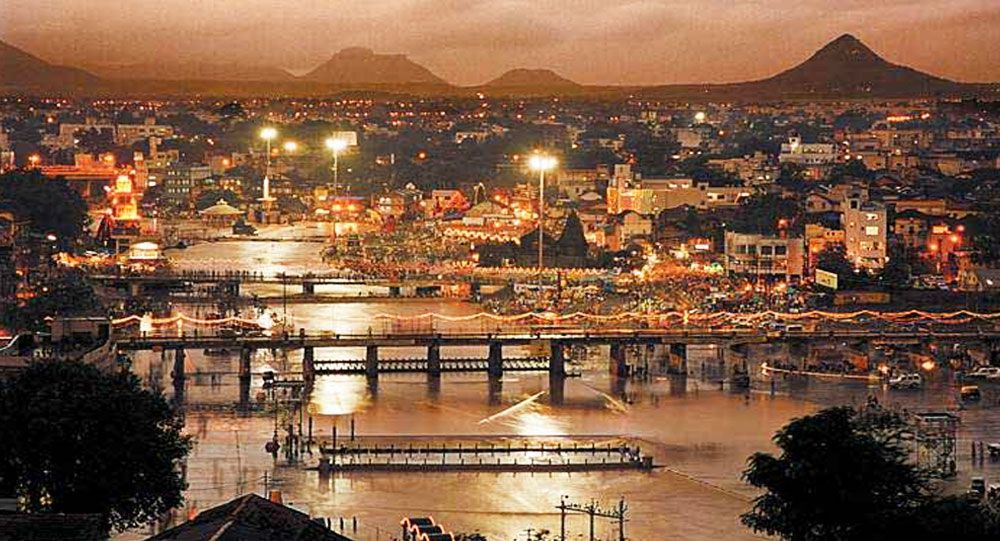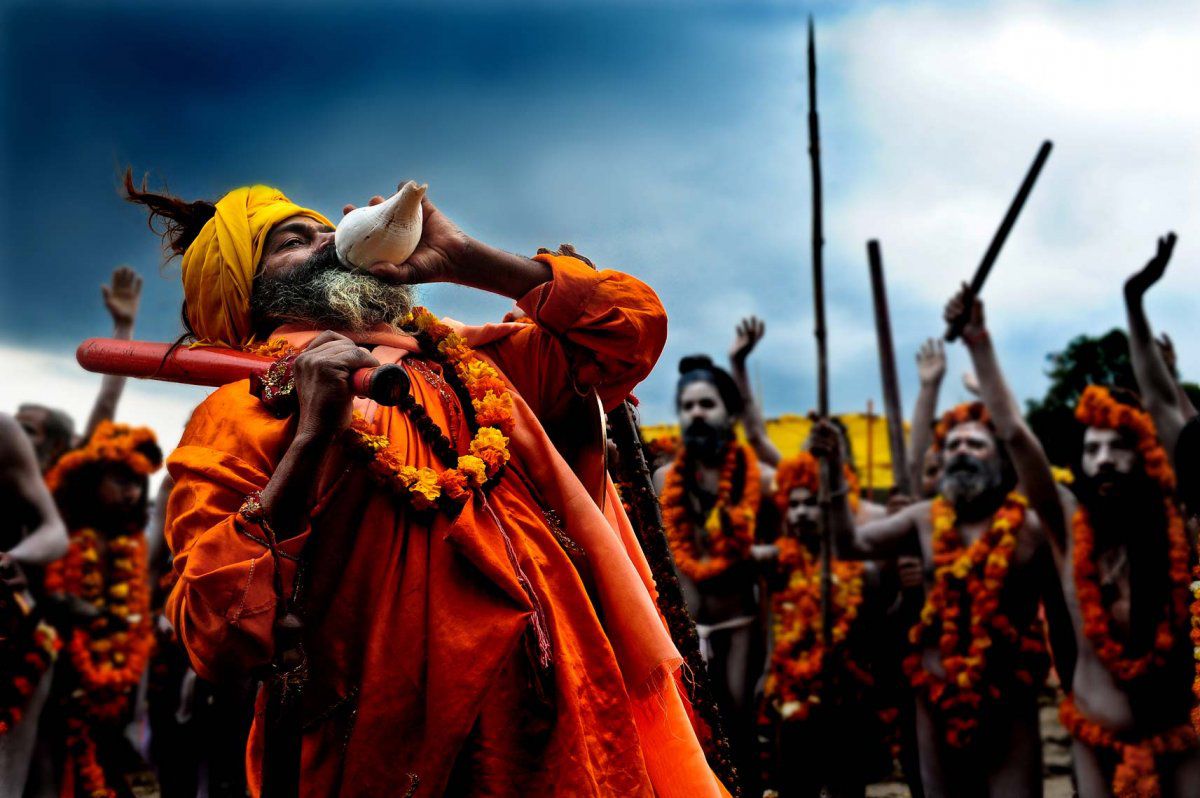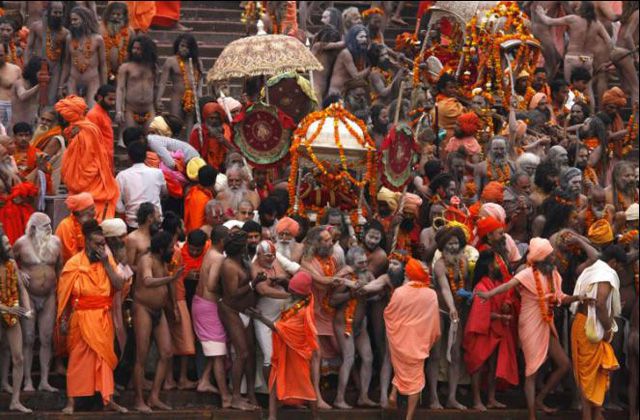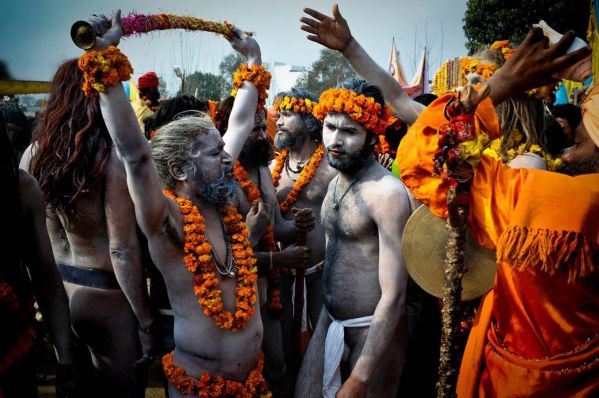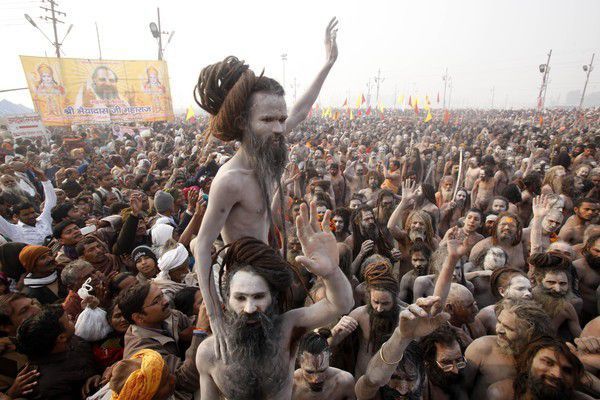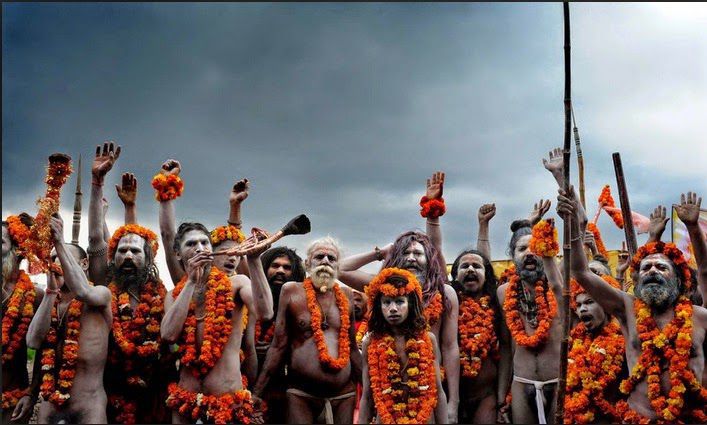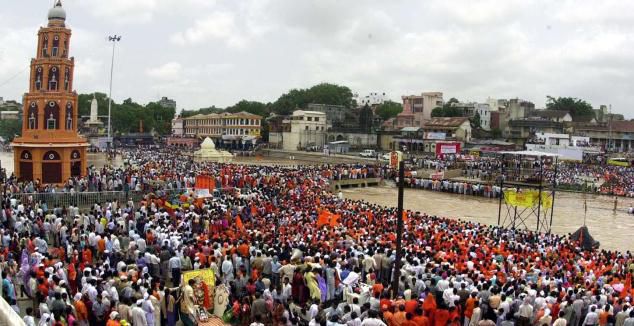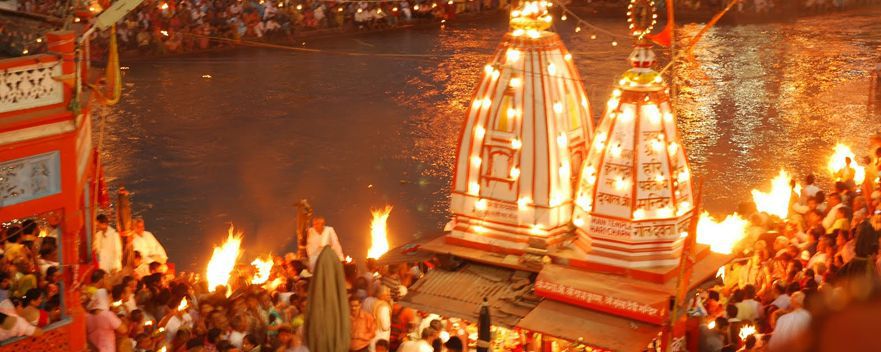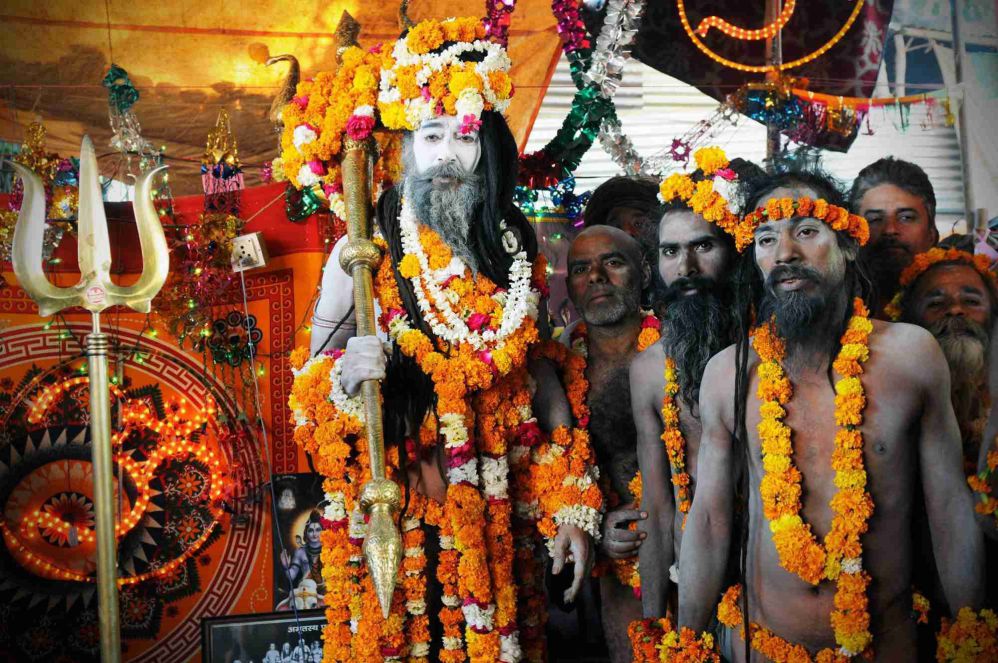No products in the cart.
Nashik Kumbh Mela 2015
What else is more heart-warming and mind-boggling than to see millions of holy minds coming together at a single place to commemorate the ultimate spiritual humility and faith? Yes. It is the Kumbh Mela- the greatest pilgrimage and festival in the Hindu religion. The world’s largest spiritual meet, Kumbh mela happens once in 12 years attracting devotees from around the globe to take a dip in the holy currents of Ganga, Yamuna and the mystical Saraswati. A huge cultural spectacle, Kumbh mela witness scores of people every day who come with immense faith in such overwhelming figures to discuss faith and wash away their sins, that is totally enchanting to observe.
Pilgrims perform rituals like bathing in sacred river, religious discussions, fair, mass feeding of holy men as well as deprived ones, devotional singing and lot more. Participation of millions people in this event beautifully manifest the impressive faith of people in god.
Why is the Kumbh Mela celebrated?
Hindus believe that bathing or taking a holy dip at an appropriate time leads them to moksha and washes away their sins. The time and the place for the festival are determined by the position of the planet Jupiter and the Sun.
The legend behind Kumbh mela is enticing and interesting. There are many versions to the origin of the Kumbh Mela. One of the versions goes that in the mythological times, one day the demigods and the demons assembled near the shores of the milk ocean to acquire the pot of nectar of immortality. They decided to churn it out form the milk ocean and later share it among themselves. The Mandara Mountain was used as a churning pole, and Vasuki, the king of serpents, was used as the rope for churning. With the demigods at Vasuki’s tail and the demons at his head, they churned the ocean for a long periods of1,000 years. A pot of nectar was eventually produced, and the demigods, being fearful of what would happen if the demons drank their share of the nectar of immortality, stole away the pot and hid it in four places on the Earth: Prayag (Allahabad) Hardwar, Ujjain, and Nasik. At each of the hiding places a drop of immortal nectar spilled from the pot and landed on the earth. These four places are believed to have acquired mystical power, and festivals are regularly held at each, Allahabad being the largest and most important.
Another version has it that the gods once lost their vigor and in order to get back it, they settled with the demons to churn the primitive ocean of milk for amrit (the nectar of immortality) and share it equally between them. However, a fight broke out, which went on for 12 human years. During the battle, the celestial bird, Garuda, flew away with the Kumbh that held the nectar. Drops of nectar are believed to have fallen in the places that the Kumbh Mela is now held — Prayag (Allahabad), Haridwar, Nashik, and Ujjain.
It is believed that the Devas visit these sacred spots every 12 years to bathe and remain immortal.The written evidence of the Kumbh Mela can be traced back to the reign of King Harshavardhana of India in 629-645 CE, by Chinese monk Xuanzang.
When is the Kumbh Mela celebrated?
The Kumbh Mela occurrences are as follows:
- The Kumbh Mela (sometimes called Purna Kumbh or “full Kumbha”), occurs every 12 years at a given site.
- Ardh Kumbh (“Half Kumbh”) Mela occurs between the two Purna Kumbha Melas at Prayag and Haridwar.
- The Maha Kumbh occurs after 12 Purna Kumbh Melas i.e. every 144 years.
Astrologically, dates of Kumbh Mela depends upon the positions of Jupiter (brahspati) and Sun. It is celebrated in Haridwar when the sun is in Aries (mesha rashi) and Jupiter in Aquarius. When Jupiter is in Taurus (vrishabha rashi) and the Sun in Capricorn (makar rashi), then the Kumbh is celebrated in Prayag. Kumbh Mela is celebrated in Ujjain when Jupiter and Sun are at Scorpio (vrishchik rashi) and is celebrated in Triambakeshwar in Nashik when Jupiter and Sun falls under the zodiac sign Leo.
Nashik Kumbh Mela 2015
This year since the position of Jupiter and the Sun falls in zodiac sign Leo(singh rashi), Nashik will again get an auspicious opportunity to host the Kumbh Mela at the holy Triambakeshwar located in Maharashtra, India. The previous Kumbh Mela at Nashik was held in the year 2003.
The main ritual performed at Kumbh Mela is the ritual bath. Hindus trust that submerging themselves in the sacred waters on the most auspicious day of the new moon will release them and their ancestors of sin, thus ending the cycle of rebirth. Pilgrims start lining up to cleanse from around 3 a.m. on this day.
As the sky reddens and the sun slowly comes up, the different groups of sadhus move in procession towards the river to bathe. The Nagas, India’s famous naked men, usually lead. With tangled locks of hair, their bodies enveloped in ashes, and their tridents raised soaring above their heads, they descend upon the bathing area with great pompous and loud music of their conch shells fill the air making the moment is magical and enchanting. Then comes the countless other sects of holy men dressed in saffron colored cloth and carrying their staffs of renunciation who took their turn and bathed in the currents of ganga.
After bathing, the pilgrims sport fresh clothes and proceed to worship by the river bank. They then walk around listening to discourses from the various sadhus and teleport to a world of absolute peace, tranquility and spirituality.
It is estimated that more than 80 million people from across the world attended the previous Kumbh Mela that was held at Allahabad in 2013. Maharashtra minister for tribal welfare Vishnu Sawra said here more than eight crore devotees are likely to visit upcoming Kumbh Mela at Trimbakeshwar in Maharashtra’s Nashik district. Preparations are on to accommodate this huge surge of devotees in this period.
Nashik Kumbh Mela 2015 Schedule of Events
S.No
Date
Day
Event
1
14th July 2015
Tuesday
Flag hoisting of the main ceremony at Ram Kunda
2
14th August 2015
Friday
Flag hoisting of the Akhara at Sadhugram
3
26th August 2015
Wednesday
Shravan Shudha- First Snan
4
29th August 2015
Saturday
Shravan Purnima – First Shahi Snan at Ram Kunda
5
13th September 2015
Sunday
Bhadrapad Amavasya – Second Shahi Snan/ Main bathing day
6
18th September 2015
Friday
Bhadrapad Shukla Panchmi (Rushipanchami) – Third Shahi Snan
7
25th September 2015
Friday
Bhadrapad Shukla Dwadashi – Vaman Dwadashi Snan
Why Should one Attend the Kumbh Mela?
- The glory of this spiritual festival is worth watching.
- It is believed that all your sins is washed away when you bath in the sacred river of the city Kumbh Mela is being held in.
- Witness the biggest human gathering ever.
- More than a festival, an opportunity to find oneself.
- Participate in unique rituals.
- Take a dip, and make a wish.
- Experience mystical charm of kumbh.
How to reach Nashik from Mumbai?
Triambakeshwar, Nashik
The Nearest airport to land on the holy city of Nashik is Mumbai or Pune with a distance of 175 km. Nashik railway station is one of the major stations of the Central Railway and a number of trains connect Nashik to other cities and towns.
185 km from Mumbai one can arrive at Nashik through NH-3 via Thane-Kasar-Igatpuri. Nashik is 220 km away from Pune. There are also several private luxury video coach and state buses available between Nashik and cities like Pune, Shirdi, Aurangabad and Mumbai. Maharashtra State Transport buses connect Nashik to distant places of Maharashtra. Daily Taxi service is also available between Nashik and Mumbai.
Places You Can Visit When in Nashik:
Besides the grand Kumbh Mela, Nashik also houses a lot of other attractions that one must not miss during their trip. A pious place filled with holiness and fragrance of spirituality, it is a place which surely needs to get a place in your travel list.
Ramkund
Believed that Rama and Sita used to bath in this tank during their exile, people bring ashes of their departed relatives and immerse it in this holy tank.
Muktidham Temple
The Temple is built with white makrana marble and 18 chapters of the Gita are inscribed on the walls, making it a very unique trait of this temple. A visit to this temple by Hindus is considered as a visit to the 4 dhams or holy centres.
Coin Museum
the only museum dedicated to coins in Asia, the coin museum in Nashik has a fine compilation of researched and well-documented history of Indian currencies.
Someshwar
Adorned with temples of Lord Shiva and Lord Hanuman on the banks of the river Godavari at Someshwar, this is a very green place with a cool climate leaving us speechless with its serene beauty.
Pandav cave
located on hill at the outskirts of Nashik city on Nashik Mumbai road, These caves are the group of old Buddhist caves. All the caves are great examples of intricate carving and craftsmanship but the 3, 10, 18 caves are a must see for their outstanding sculptures. Most of the caves have the magnificent idols of Buddha and or the popular Jain Teerthankaras.
Ganga Godavri Temple
This temple is adjacent to Ramkund and was built in 1775 by Gopikabai Peshwe. The presiding deities of the temple are Godavari and Bhagirathi. The temple remains closed for 11 years, but opens on the day of Kartik Poornima (full moonlight) once in 12 years and kept open for a year in Simhastha period.
Other Important Temples: Muktidham temple, Bhakti Dham, Shree Kapaleshwar Mahadev temples, Gangapur, Shree Ved Temple, Saptashringi Devi Temple
Other Attractions: Bhandardara, Nandurmadhmeshwar, Dudhasagar Waterfalls, Grishneshwar, Jyotirlinga, Bhimashankar Jyotirlinga, Ajanta Caves.
Climate in Nashik during Kumbh Mela
It is monsoon season in Nashik during the Kumbh mela period with medium rainfalls. It is pleasant with greenery all around.
Get away from your tedious schedules and witness the largest meet of mstical minds. Take a dip in the currents of the holy rivers and wash away your sins and attain the magical powers. Experience the spiritual ecstasy, bathe in the laps of Maa Ganga, learn Vedas from the spiritual gurus themselves and get lost under the magical spell of the holy cry of Sadhus and rishis.


